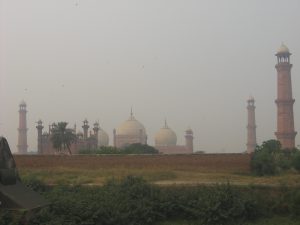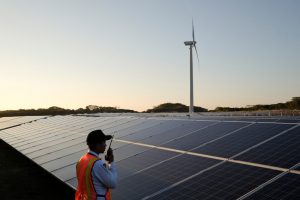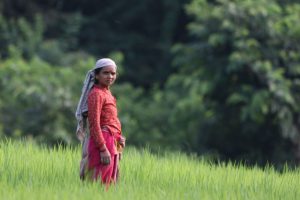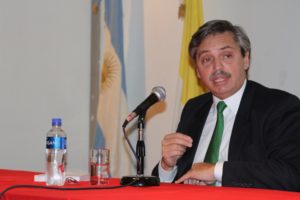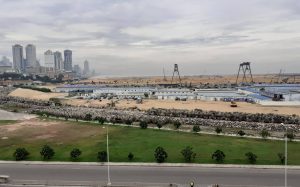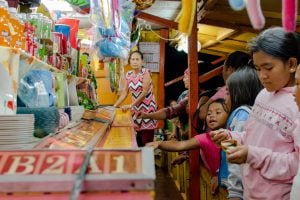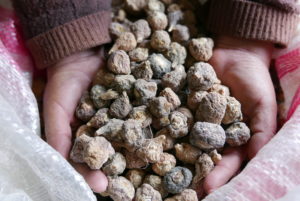The Mahakali River – called Sharada in India – delineates the western border of Nepal with Uttarakhand in India. The river and its tributaries are essential lifelines to the people living in this basin on both sides of the border. The Sharada Barrage in India that diverts the water of the river is a crucial source of irrigation water to large parts of the eastern Uttar Pradesh.
Major changes have come and are coming to this region that was relatively remote till recent years – the most important being the Pancheswar dam and hydroelectricity project planned jointly by the governments of India and Nepal.
The basin is suffering the effects of climate change, with the glaciers at the headwaters of the Mahakali River in the High Himalayas melting earlier every spring – as a result, farmers are now unable to use the meltwater for irrigation; it has flown down the river by the time the temperature is high enough for them to sow their crops.
Sand and stone mining from the riverbed – both legal and illegal – are causing major changes in the water flow of the Mahakali and are making it more difficult for communities to reach the water for their daily use, especially in non-monsoon months. Communities living in the basin also face other hazards such as illegal fishing with dynamite and poison, and are vulnerable because the basin has become a route for illegal wildlife smugglers.
A paucity of livelihood options has forced male migration out of the basin, and female-headed households are having to cope with an outside world – often without adequate training to do so. Many are from marginalised indigenous communities, which increases their vulnerability.
Call for proposals
We are inviting proposals for story grants with one or more of these and similar issues in focus. We have a particular interest in the impact of changes in the basin on women and other marginalised groups (including youth, indigenous people, ethnic minorities, people with disabilities) and their ability to adapt.
We encourage stories that report on potential solutions and address how vulnerable communities are responding to challenges. We are also highly interested in stories that utilise relevant data to illustrate the issue in a compelling and easy-to-understand way.
We are looking for stories with the potential to inform policy decisions by addressing domestic or transboundary environmental concerns.
Four story grants will be provided. This is being done in partnership with the Transboundary Rivers of South Asia (TROSA) project of Oxfam.
Who should apply:
Journalists (online, print, television, radio) with a track record of reporting on climate change, deforestation, water issues, wildlife trafficking, natural resource management and other environmental issues. We encourage applications from freelancers and staff from all types of media – international, national, local and community based.
Grantees have to publish or broadcast their stories in their affiliated media. The Third Pole and TROSA shall have the right to edit, publish, broadcast and distribute these stories freely, once they have been published/broadcast in the original media outlet. Freelance reporters should demonstrate a plan for publication and provide a letter of interest from an editor.
We expect to award grants averaging $1,000 depending on the proposal and reporting format. We will consider larger awards for in-depth stories using innovative or investigative approaches. Applicants should provide a detailed budget with justification for the amount requested.
We expect that stories will be produced with equipment the applicant already has access to (including cameras, lighting, tripods, laptops etc.) and will not consider budgets that include procurement of new equipment.
We also encourage the use of multimedia and new or unique media platforms to present and share the stories. Applicants with ideas for long-form and multimedia narratives should include plans and budget for accompanying multimedia elements (i.e. video, photos) and distribution channels in their pitch.
Stories can be produced in English or local languages, or both. Applicants who intend to write or produce stories in local languages need to include an English translation. Please include the cost for translation in the budget, if necessary.
Expected story lengths:
- Text-based stories: 1,000 to 2,000 words
- Photo stories: 10-20 images with descriptive captions and a short 200-400 word introduction
- Multimedia package: Text between 600 to 1,500 words with 2-4 minute video and/or graphics, photos and maps
- Broadcast: Video piece around 4-6 minutes in length with a short, roughly 200-word introduction
- Audio report/podcast: Feature of up to 20 minutes in length with short text to summarise the audio.
Judging criteria
Applicants should consider the following points when devising their story proposals
- Timing: We expect the proposed story or stories to be published by 31 December 2019.
- Relevance: Does the proposal meet the criteria and objectives? Why does this story matter and to whom? Is the main idea, context and overall value to the target audience clearly defined?
- Angle: If the story has been covered by other media outlets, does your proposal bring new insights into the topic or offer a fresh angle?
- Impact: Does the proposal have a compelling narrative or investigative element that will inform and engage, draw attention, trigger debate and urge action?
- Innovative storytelling: The use of creative approaches and data visualisation will be considered a plus.
- Can the story be realistically completed within the given time frame? Is the budget realistic?
- Diversity: We will take gender and geographical distribution into account when selecting the grantees in addition to the criteria above
- Transboundary proposals: Joint proposals by journalists from India and Nepal will be given preference.
How to apply
Applicants should copy-paste the form below into an MS Word file, complete it, and mail to [email protected] as an attachment. Also attach
- A letter from the editor in the official letterhead, confirming that your report will be published/broadcast. Freelancers should attach a letter from the editor of the media outlet in which they plan to publish/broadcast;
- Your resume/CV;
- Two samples of your reporting. If the samples are too heavy to attach, attach a separate MS Word file with the links to the samples.
Remember the application deadline: November 3, 2019
Application form
| Full Name: |
| Address: |
| Gender: |
| Email: |
| Skype: |
| Phone Number: |
| WhatsApp Number (if different): |
| Media Outlet Name (freelancers should give the name of the outlet where they propose to publish/broadcast): |
| Media Outlet Website: |
| Editor’s Name (freelancers should give the name of the editor of the outlet where they propose to publish/broadcast): |
| Editor’s Email: |
| Biography (Maximum 300 words):
|
| Story Idea (Maximum 500 words):
|
| Budget (Detail as much as you can):
|
![<p>Huge amounts of electricity are created in Kinnaur, but most villages have to deal with extended power cuts [image by: Subrat Kumar Sahu]</p>](https://dialogue.earth/content/uploads/2019/03/electricity.png)

